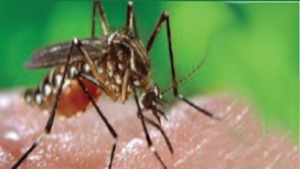State Taking Steps to Prevent Spread of Mosquito
State officials are removing certain plants near the Honolulu International Airport in an effort to stop the spread of a troublesome mosquito on Oahu.
The removal of bromeliads in planters along the H-1 Freeway began today and will continue through the week, the Department of Transportation said in a press release.
The Aedes aegypti mosquito, which is capable of spreading dengue fever, has been found at the airport four times in the past year.
Bromeliads can capture water in their center that can serve as breeding ground for mosquitoes.
The mosquito had not previously been found on Oahu for more than 50 years, said Gary Gill, the Department of Health’s deputy director for environmental health.
“We need to take action now to prevent the Aedes aegypti from breeding and spreading to the rest of the island,” Gill said.
The removal of the bromeliads is the latest action based on DOH recommendations taken at the airport since the mosquito was found there last year. Others include trimming back trees and other vegetation and eliminating areas where standing water collects.
Aedes aegypti, also known as the yellow fever mosquito, is already established on the Big Island.
According to the Centers for Disease Control and Prevention, the disease is a leading cause of illness in the tropics and subtropics with as many as 100 million cases of dengue fever reported annually worldwide.
The CDC said between 100 and 200 suspected cases of dengue are introduced by travelers each year in the US.
The illness is characterized by sudden onset of high fever, severe headaches, joint and muscle pain, nausea, vomiting and rash.
Dengue hemorrhagic fever, the most severe form of the disease, can be fatal.
The most recent instance of dengue fever in Hawaii occurred last year. In 2011 there were six imported cases.
In 2001 and 2002, 122 Hawaii residents were confirmed to have contracted the disease. Ninety-two of those occurred on Maui with the remainder on Oahu and Kauai.
Those outbreaks were believed to have involved a different mosquito, Aedes albopictus. That vector, also known as the Asian tiger mosquito, is less effective in spreading the disease because it tends to bite fewer people, the CDC said.
Those were the first locally transmitted cases in the state since 1944, the CDC said.
The disease is transmitted only through mosquito bites and cannot be spread directly from person to person.
A small outbreak in the Big Island’s Puna district in the 1990s was believed confined to travelers who had recently visited the South Pacific.
















